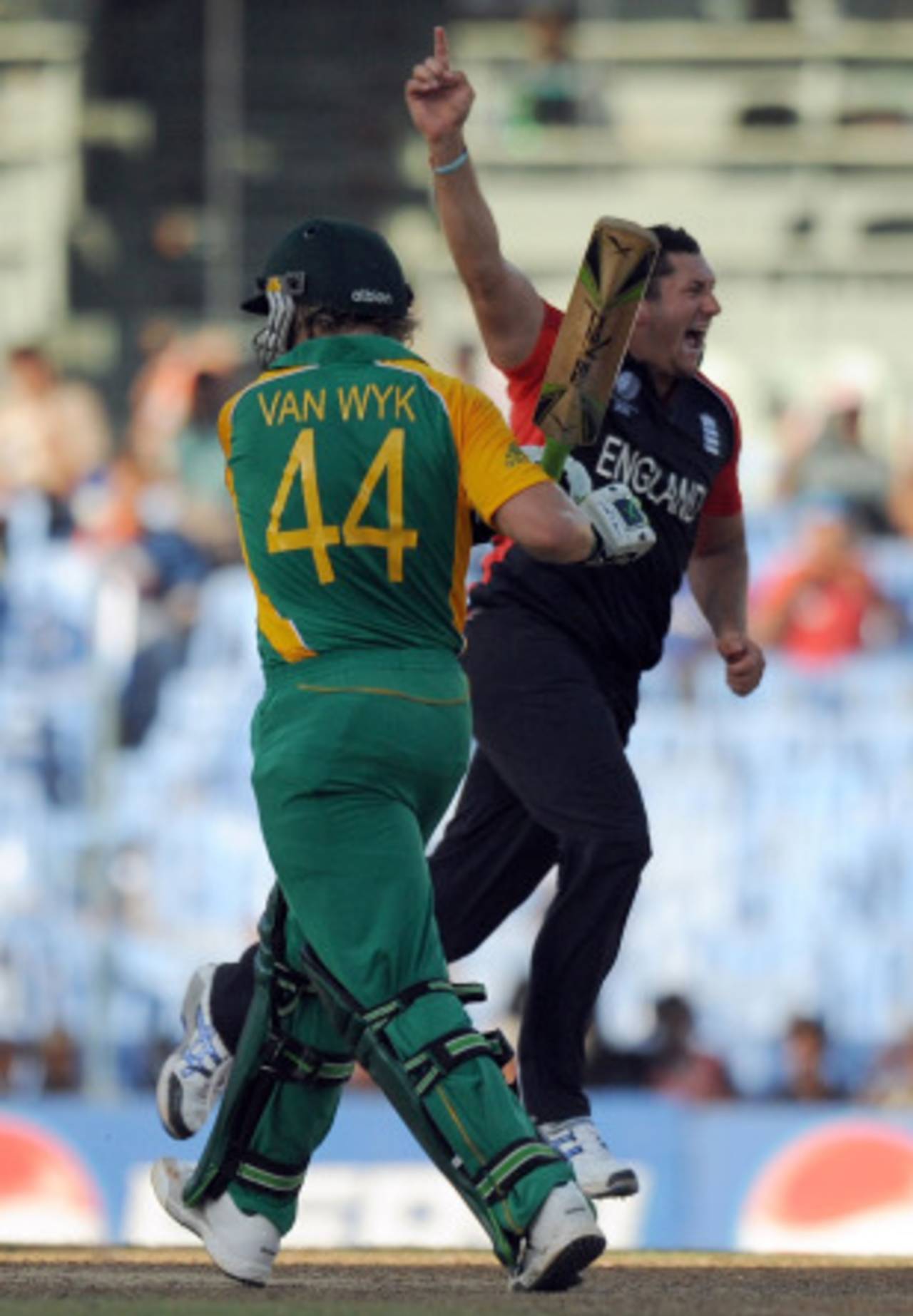A marshmallow has many redeeming qualities. It's sweet and light and fluffy and tastes as good dipped in chocolate as it does chargrilled over a flame. That it can so easily get burnt is one of its shortcomings.
Marshmallows can't withstand. Trap them in a clenched fist and they're soon squashed. Heat them up and they become gooey and pliable. In other words, place them in a situation of pressure and they're likely to become unrecognisable, a little like the South African middle order.
"It's the first outing they've had for a long time," Graeme Smith said at the post-match press conference. A forgetful outing it was, as seven wickets tumbled for 41 runs, and the flames of spin, swing and attacking bowling them burnt them beyond recognition. Once the top four were gone, they panicked, like Faf du Plessis, who called for a run that simply wasn't there; they were outclassed, like JP Duminy, who has no answers for James Anderson's accuracy, and they couldn't settle like Robin Peterson, who looked like getting out from just about the first ball he faced.
Morne van Wyk, a first-class campaigner of 16 seasons, showed a certain composure and maturity to combine with Dale Steyn and then also played a shot in anger - only to play it onto his own stumps. It left Steyn and Morne Morkel, both proficient with the bat, with a simple enough task to complete, but one that was made difficult because of the carnage they'd seen before them. If batsmen at positions five, six, seven and eight had been squashed, what chance did they have?
This middle order, particularly from No. 6 downwards, has not spent any time at the crease in this World Cup, so it's only natural that they would need a period of adjustment. Maybe that period would mean scoring slowly, trying to make sense of the conditions and work out to play on them. Maybe it meant one or two of them perishing in the cause. On a bowler-friendly Chennai surface, they had no such luxury.
Conditions favoured the bowlers and even though patience would have been rewarded, the pace of the game at the stage when they entered it demanded a quick adjustment and an immediate plan to shut out the pressure. Such a plan can only be executed with confidence, and confidence will only come with time in the middle, time that they have not had. It's too early to panic though, according to Smith. "We need to show a little bit more faith in them rather than to just give them one go."
No, it's not fair to call them melting marshmallows after one collapse. There Smith is correct. Where he isn't, however, is that it hasn't been just one. In the last seven ODIs, there have been three collapses, two while chasing. One of them was today. The other two came against India, South Africa's next opponents in this tournament. Munaf Patel was the man who made it happen both times. He took 4 for 29 in Johannesburg, when South Africa watched seven wickets fall for 29 runs and lost the match by one run. His 2 for 42 was part of a collapse in which South Africa lost 5 for 20 and crashed from 200 for 5 to 220 all out.
It's positions six, seven and eight that are most problematic. This time, they were the domain of Duminy and van Wyk, but Peterson, Johan Botha, Wayne Parnell and Colin Ingram have all been tried, in different combinations, to fill the slot, none with enough success to last. It presents South Africa with a puzzle they haven't had to solve too many times in the past - with the likes of Mark Boucher and Lance Klusener lurking at No. 7 to steady or surge as needed.
These days there is something less solid than the two mentioned above, and it doesn't look like South Africa are anywhere closer to hardening it up. "I thought Faf and Ab hung in really well. If they could have hung in a few more overs, we could have got home. That was a crucial part of the game," Smith said when asked about the middle order, not making any reference to the batsmen who come after du Plessis, who was pushed up to No. 5.
Inexperience is what undid du Plessis, while Duminy has yet to find a sustained period of form that made him a superstar against Australia three seasons ago. An extended run for van Wyk may turn him into the dependable man South Africa need in that position and if Botha comes back into the starting XI, he may provide stability and security in the lower middle order. Until then, it's going to remain a cluster of talented players, the kind that look good if their job is to build on what the top order has created but who can still get singed when the heat is really on.
Firdose Moonda is ESPNcricinfo's South Africa correspondent
